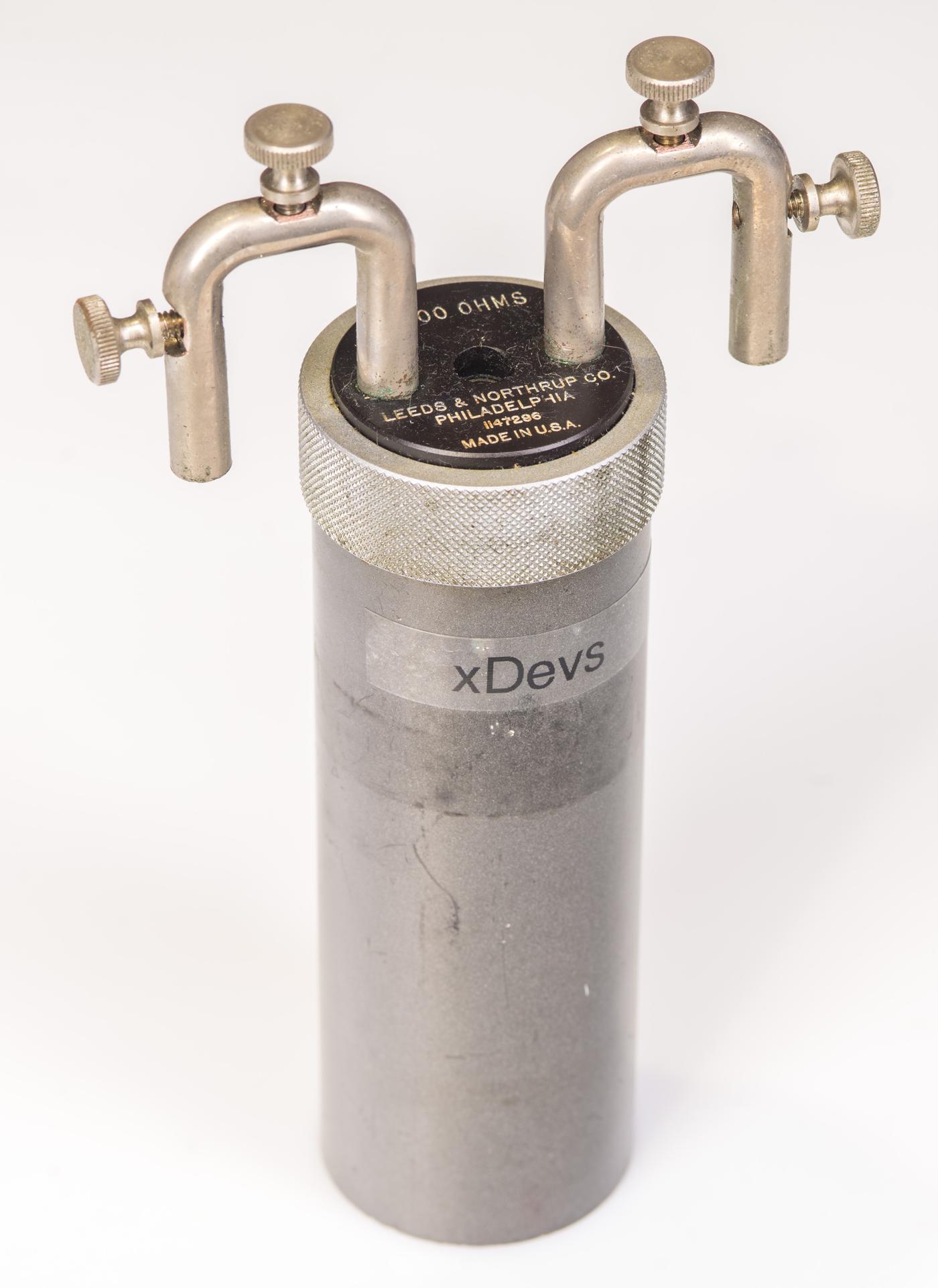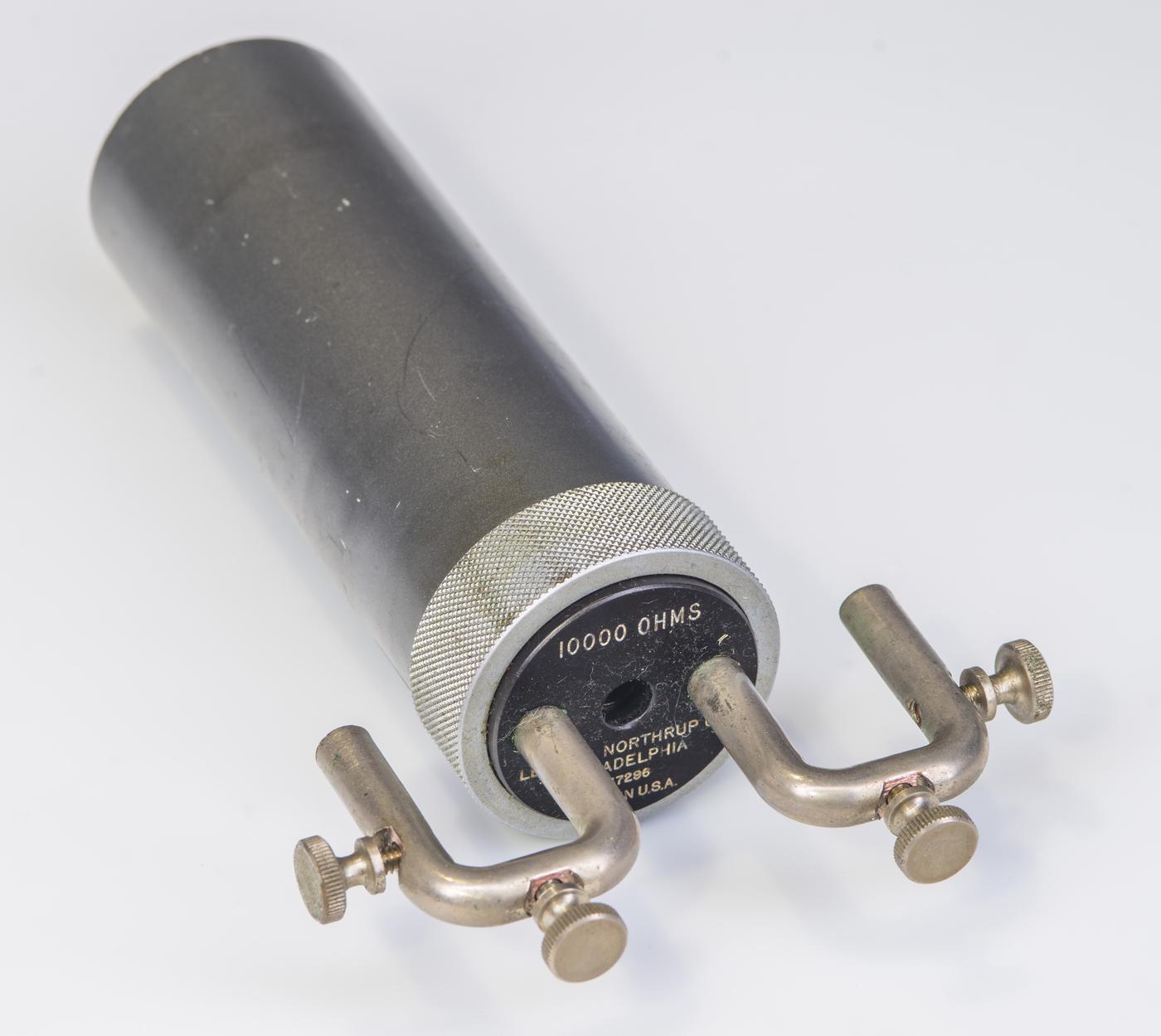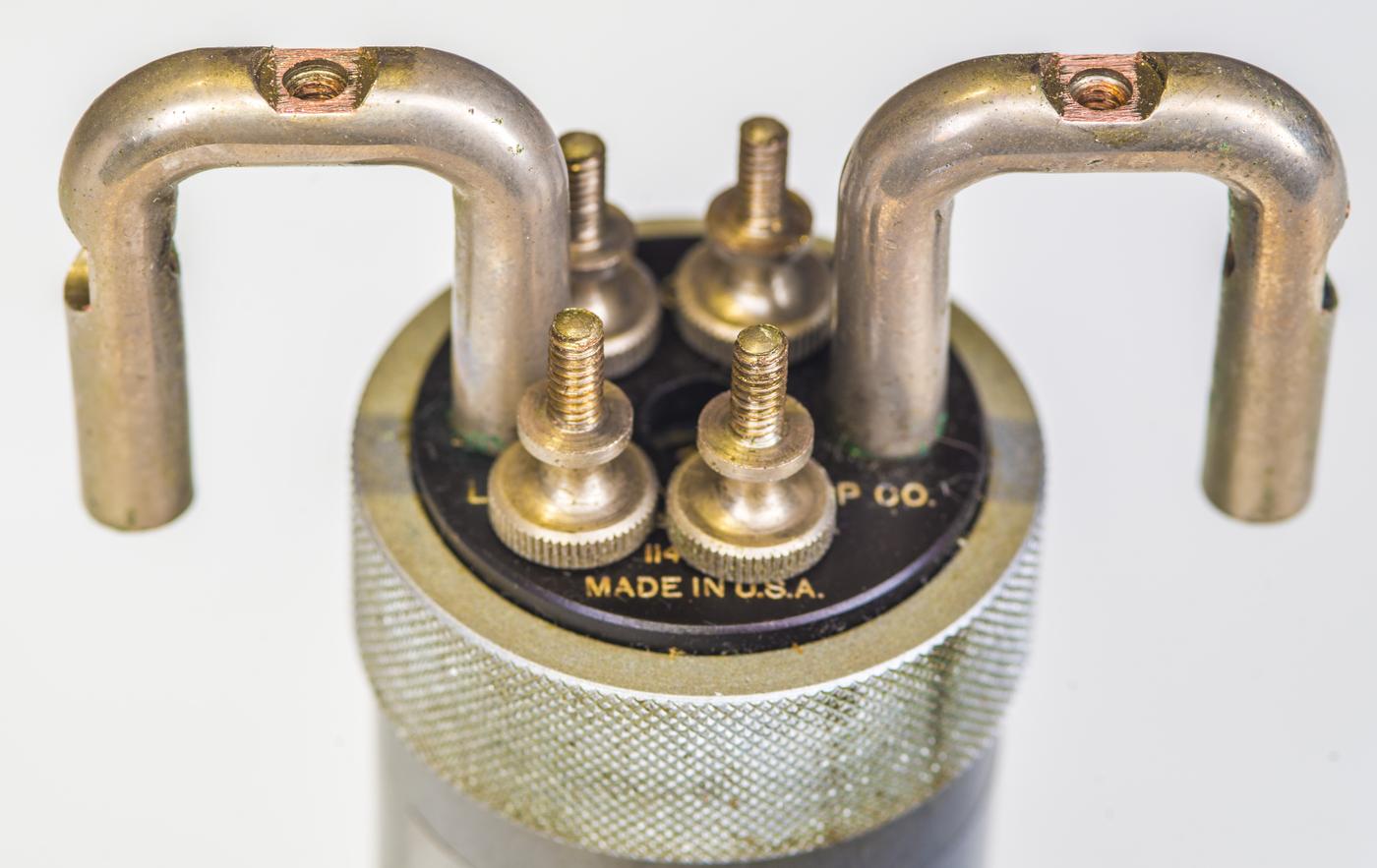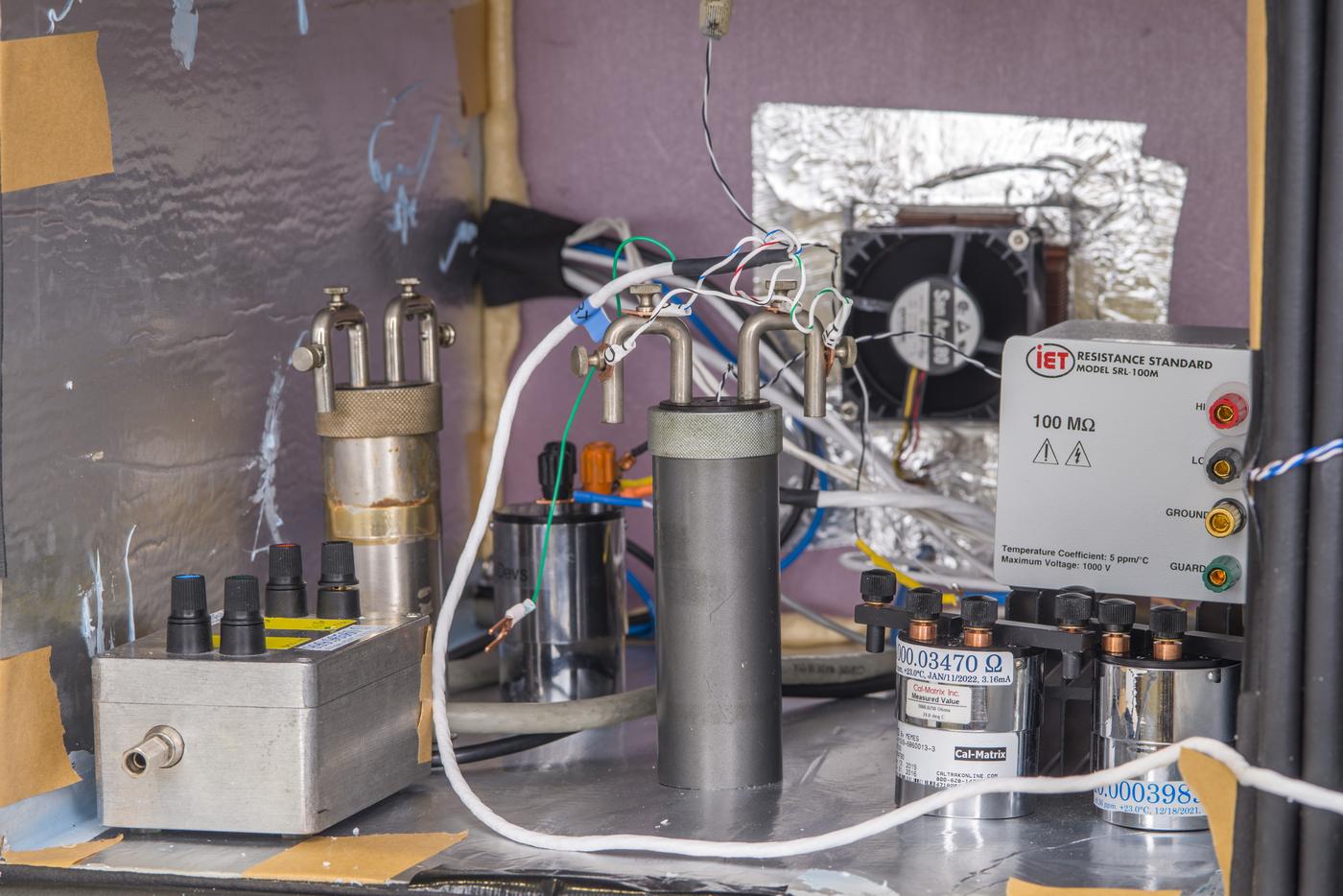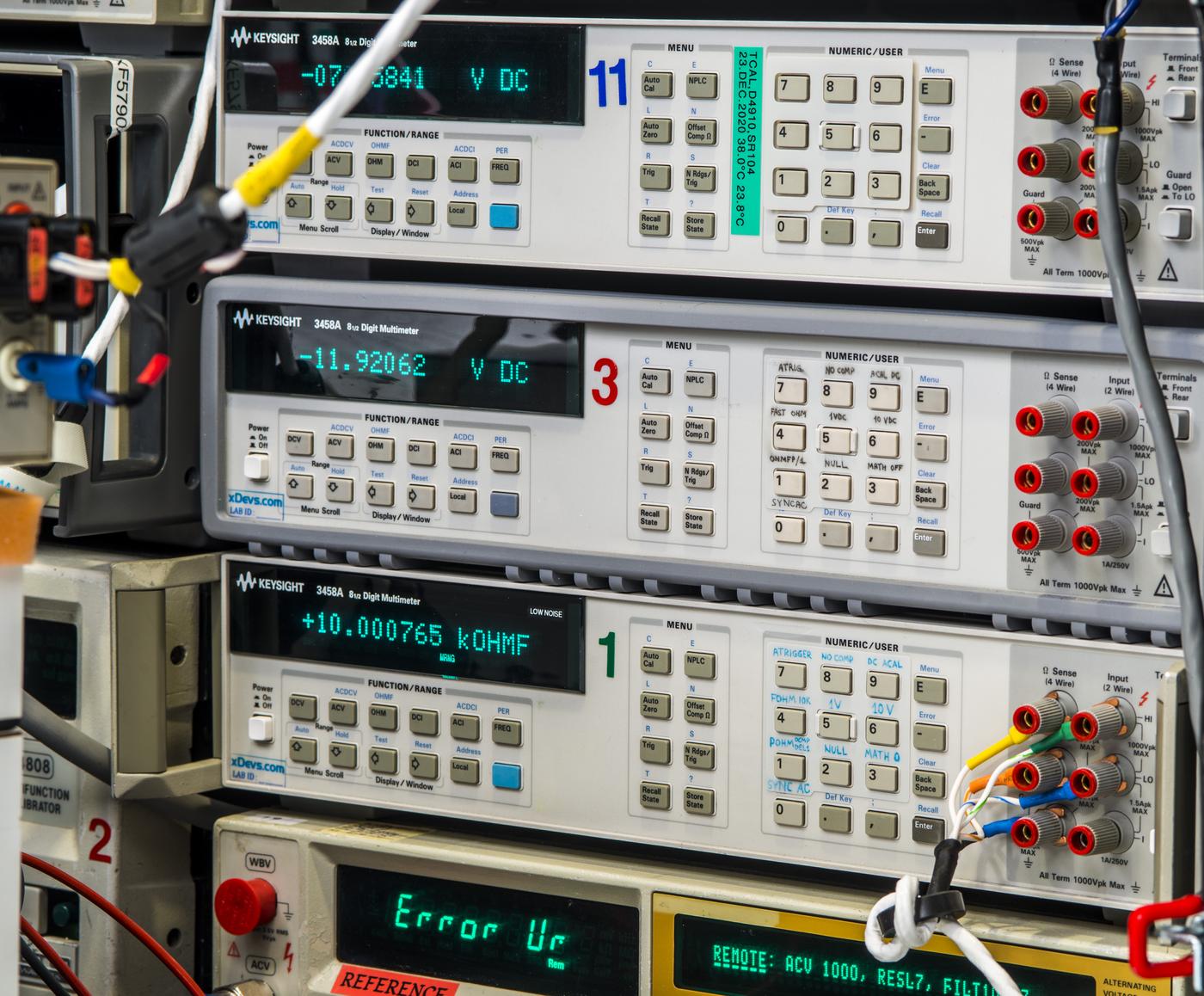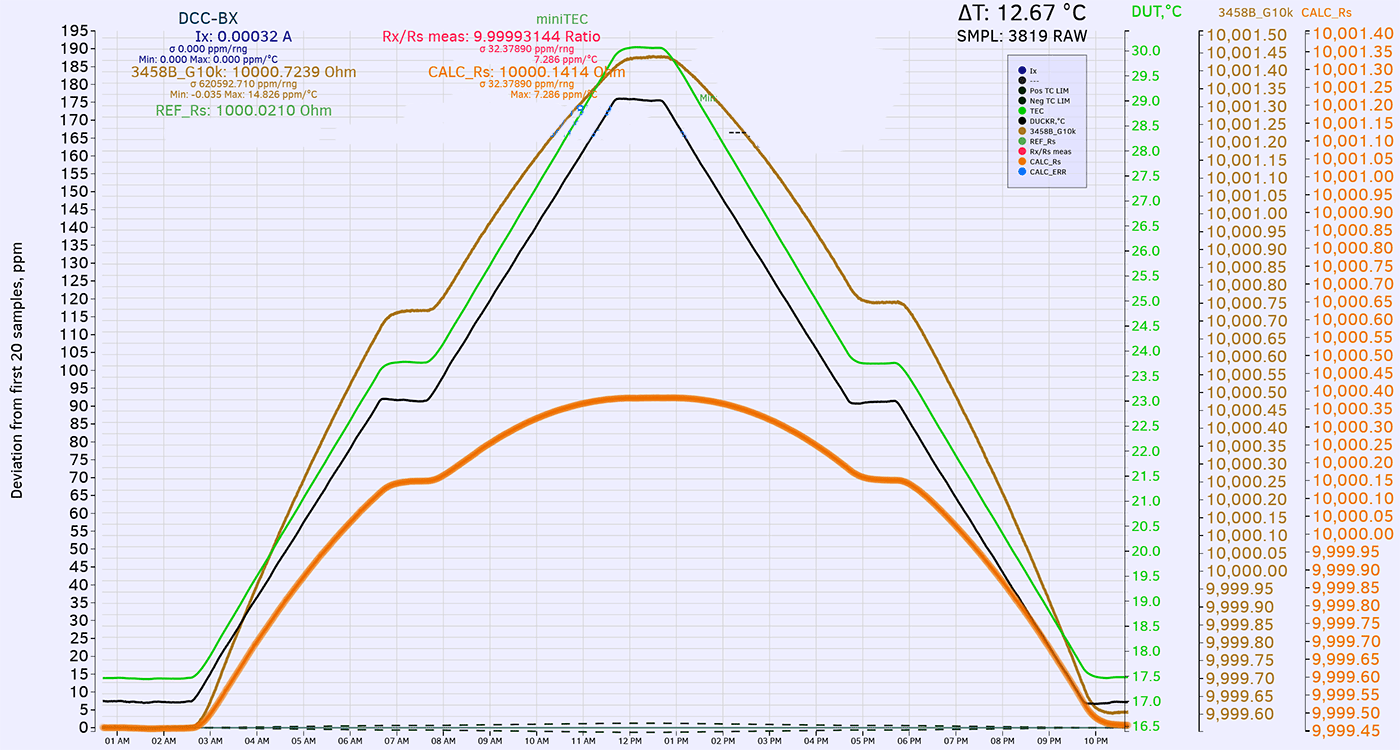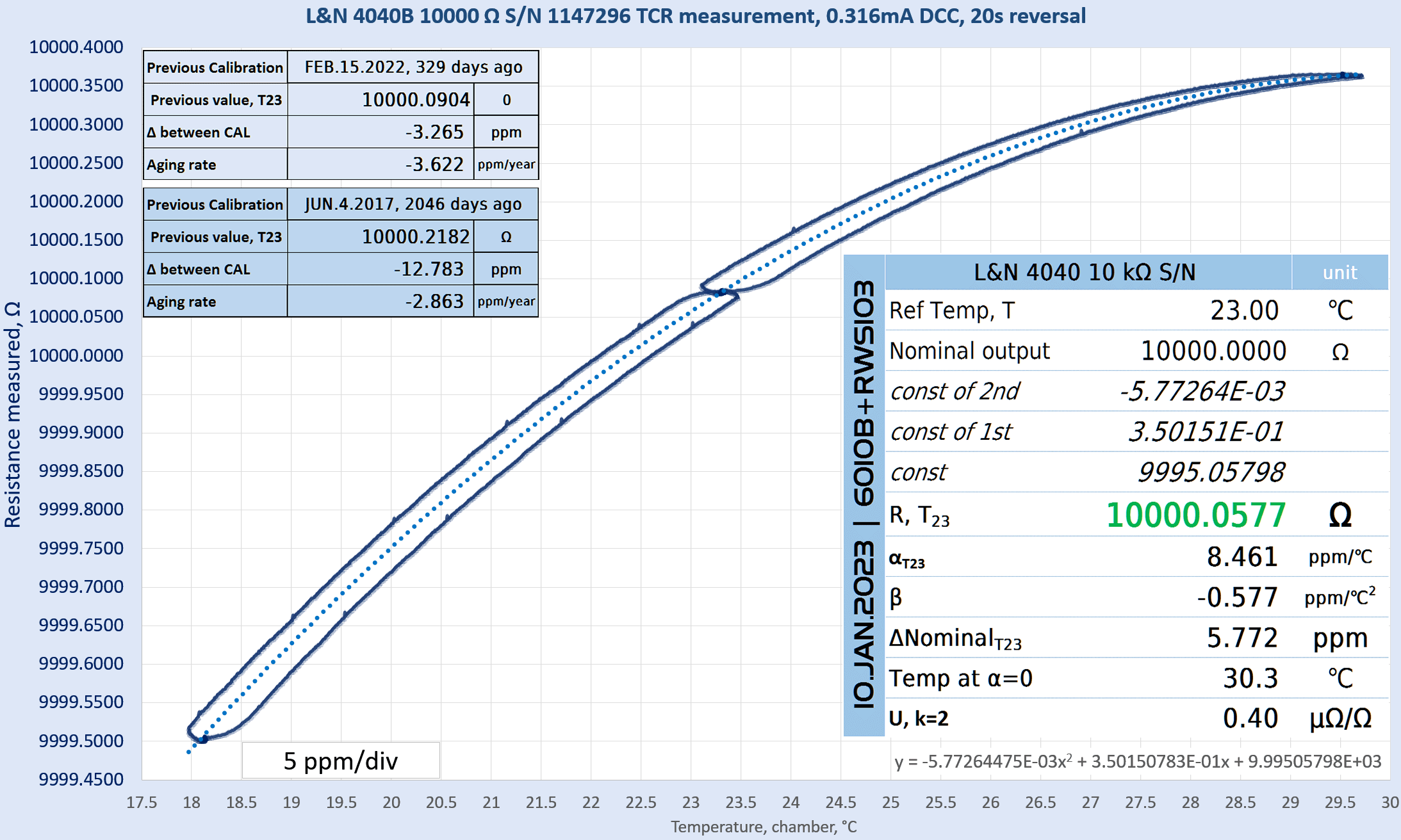Contents
Introduction
Well known fact that good stable resistor is not cheap thing. Most of common resistors we see in electronics every day are not great for long-term stability and often rated for temperature coefficient ±100 or even ±250 ppm/K. TCR 100 ppm means that every 1°C of temperature change resistance would change 100 ppm or 0.01%. While it’s very little change for most of applications and circuits, for precision work it’s not suitable at all. Let’s imagine you want use resistor to make calibration voltage source for 5½-digit DMM. Even cheap benchtop DMMs can have accuracy about 0.05%, usually much better. This means if we use resistor which may drift 0.01%/°C we will fail the calibration, with temperature change only 5°C.
So for tasks when we need high precision, for example to verify performance or to adjust benchtop DMM one need stable and known resistance elements. One of such devices example is Leeds & Northrup 40**-B series. These are available today on secondary market for very reasonable prices, since primary labs switches to use of much higher performance devices, such as ESI SR104 or even Quantum Hall Effect standard devices.
Resistor we will look at today is 10000 Ω nominal, Model 4040-B manufactured by well respected Leeds & Northrup which is 4-decade resistor. It is designed to be operated in oil bath and had factory accuracy better than ± 50 ppm from nominal at rated temperature +25 °C.
Disclaimer
Redistribution and use of this article or any images or files referenced in it, in source and binary forms, with or without modification, are permitted provided that the following conditions are met:
- Redistributions of article must retain the above copyright notice, this list of conditions, link to this page (https://xdevs.com/review/sr104/) and the following disclaimer.
- Redistributions of files in binary form must reproduce the above copyright notice, this list of conditions, link to this page (https://xdevs.com/review/sr104/), and the following disclaimer in the documentation and/or other materials provided with the distribution, for example Readme file.
All information posted here is hosted just for education purposes and provided AS IS. In no event shall the author, xDevs.com site, or IET or any other 3rd party be liable for any special, direct, indirect, or consequential damages or any damages whatsoever resulting from loss of use, data or profits, whether in an action of contract, negligence or other tortuous action, arising out of or in connection with the use or performance of information published here.
If you willing to contribute or have interesting documentation to share regarding pressure measurements or metrology and electronics in general, you can do so by following these simple instructions.
Manuals
L&N series 4015, 4020, 4025, 4030, 4035, 4040, 4045, 4050 resistance standard datasheet
Exterior and design
Resistance element is submerged in hermetically sealed metal oil can. Copper “horns” are only terminals available externally, with two thumb-nut screws to allow wiring connection.
Back in early years horn ends were amalgamated with pure metallic mercury to provide very low ohmic connection to calibration system, so beware of possible hazardous contamination on terminals of such resistors, especially if buying from former calibration lab. This resistor was acquired on eBay back in 2016, to use as a cheap travel standard. There was no certificate or previous history.
Center cap has a hole for thermometer to allow accurate resistance standard inner volume measurement to account for, and possibly compensate thermal instability when resistor used on temperature different to calibration point.
We didn’t bother to clean resistance body before measurement, to see how good data can we get with lack of care.
Performance and verification
Measurements were performed with Keysight 3458A 8½-digit DMM in 4-wire resistance mode. To mitigate tempco 4040-B standard was placed in peltier active air bath, programmed at +23.00 °C. Connection to DMMs front terminal was done with 4-conductor PTFE 1 meter long shielded AWG18 cable with bare CuTe spade forks. Guard terminal is floating and not connected at the resistor end.
Thermal chamber have mixed air with active Peltier-based heat/cool control loop. Details about DIY chambers like this are presented in this xDevs.com article
DMM configuration used for measurement:
def init_inst(self):
# Setup HP 3458A
self.inst.clear()
self.inst.write("PRESET NORM")
self.inst.write("OFORMAT ASCII")
self.inst.write("TARM HOLD")
self.inst.write("TRIG AUTO")
self.inst.write("AZERO ON")
self.inst.write("LFILTER ON")
self.inst.write("NRDGS 1,AUTO")
self.inst.write("MEM OFF")
self.inst.write("END ALWAYS")
self.inst.write("OHMF 10E3")
self.inst.write("OCOMP ON")
self.inst.write("NPLC 50")
self.inst.write("NDIG 9")
self.inst.write("DELAY 1") # 1 second delay to mitigate OCOMP accuracy issue due DA
Then meter was triggered every 5 seconds and readings were stored in DSV-file.
This resistor was measured back in June 4, 2017 using calibrated HP 3458A. All measurements during that period performed at +25.0 °C.
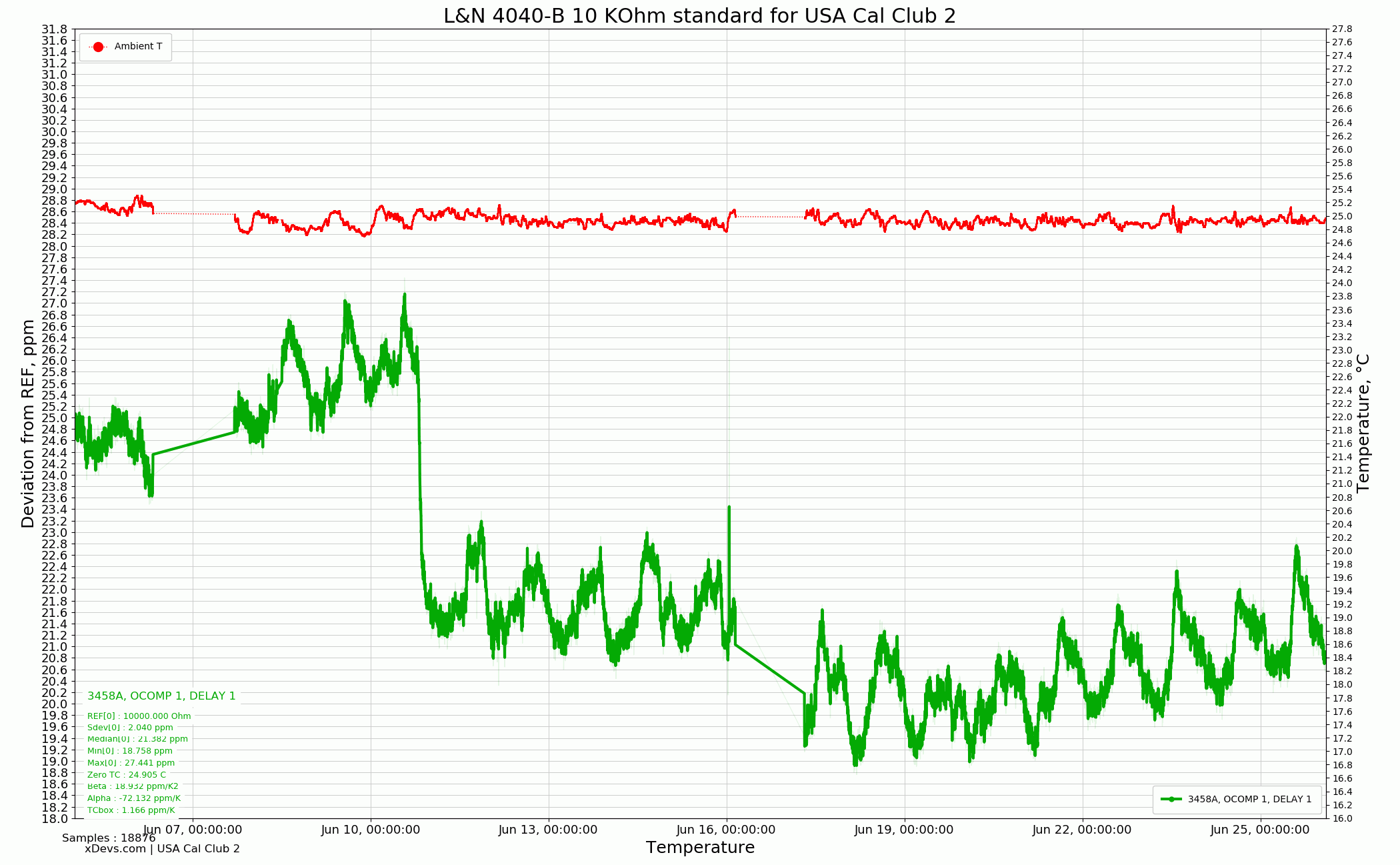
Green line shows measurement samples from 3458A. Clear wobble is apparent due to air-conditioner system cycling, as DMM was not in controlled air-bath environment.
For additional measurement of temperature coefficient DCC bridge Measurements International 6010B was used.
As reference resistance Fluke 5720A calibrator was used, configured to source 4-wire 1000.0210 Ω output. DCC sourced 316 µA current into L&N 4040B under test, while standard 1000.0210 Ω had 10 times larger current. Calibrator resistance output was calibrated few days before this test directly against ESI SR104 primary resistance standard, which in turn has verified stability better than 0.1 ppm per year.
About 4000 points were captured during temperature sweep from +17.4 °C to +30.5°C in chamber with DUT resistor.
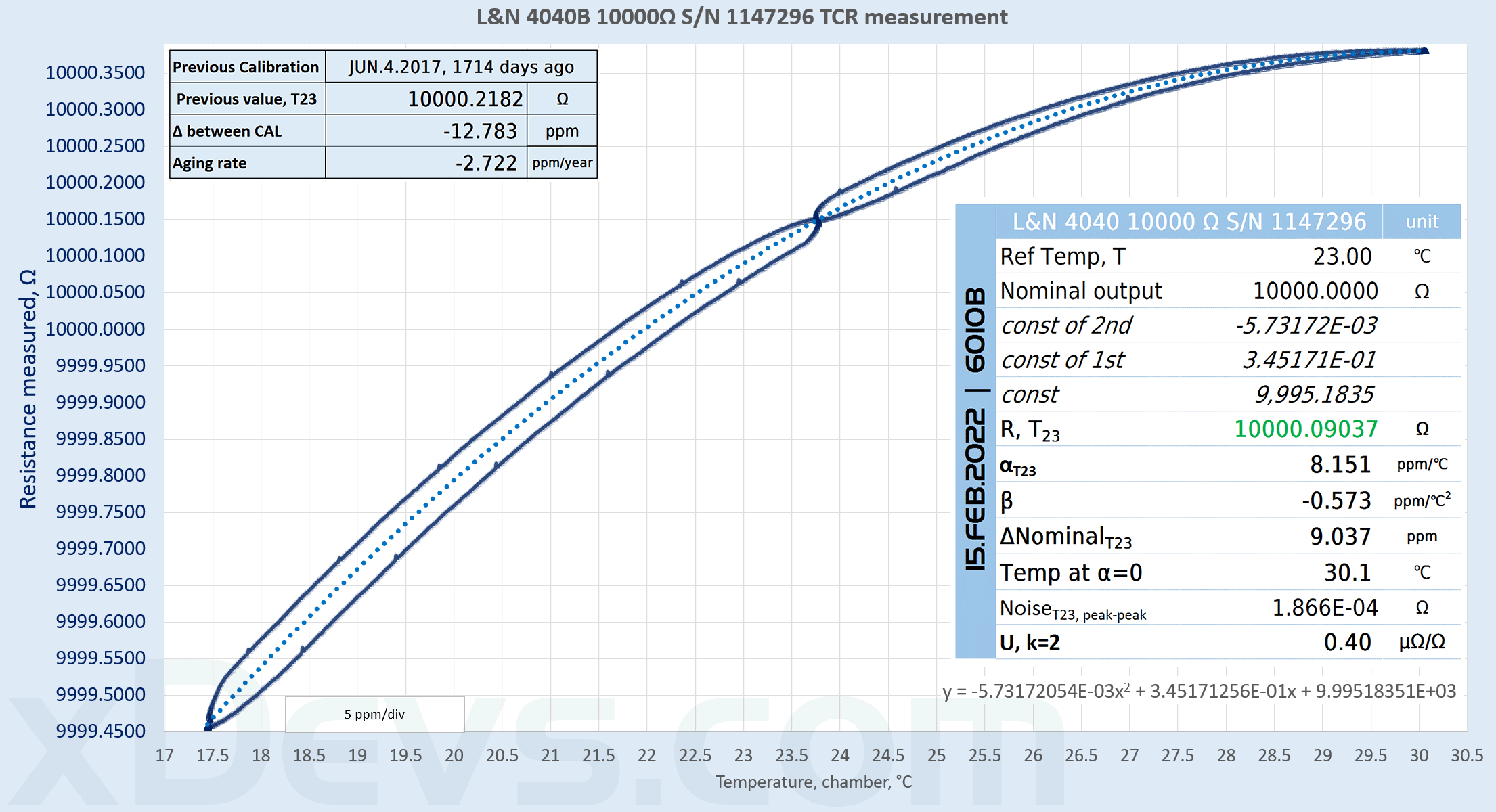
This measurement revealed rather high (for a standard) temperature coefficient α = +8.15 ppm/°C and β = -0.57 ppm/°C2. Sweet-spot temperature where TCR curve is most stable is around +30.1 °C.
Excel-file with TCR measurement results
Same data presented in time scale format:
Recalibration 2023
This same resistance standard is remeasured and recalibrated on January 10, 2023 before it is donated to USA Cal Club members for their transfers and experiments with hobby calibration chains. Measurement setup was similar to last year, except using 1 kΩ transfer resistance standard xDevs.com RWS103, freshly calibrated from ESI SR104 10000 Ω standard. Measurements International 6010B direct current comparator was configured with test current 316 µA and both the RWS103 and L&N 4040B were placed in own airbaths.
With data from this calibration we can calculate new temperature coefficient α = +8.461 ppm/°C and β = -0.577 ppm/°C2. Reversal of TCR curve calculated to be at +30.3 °C, very close to last year value of +30.1 °C. This would be suggested optimal temperature for this standard use without air-bath. Offset from nominal 10 kΩ is now +5.77 ppm, which is still pretty good for this old standard.
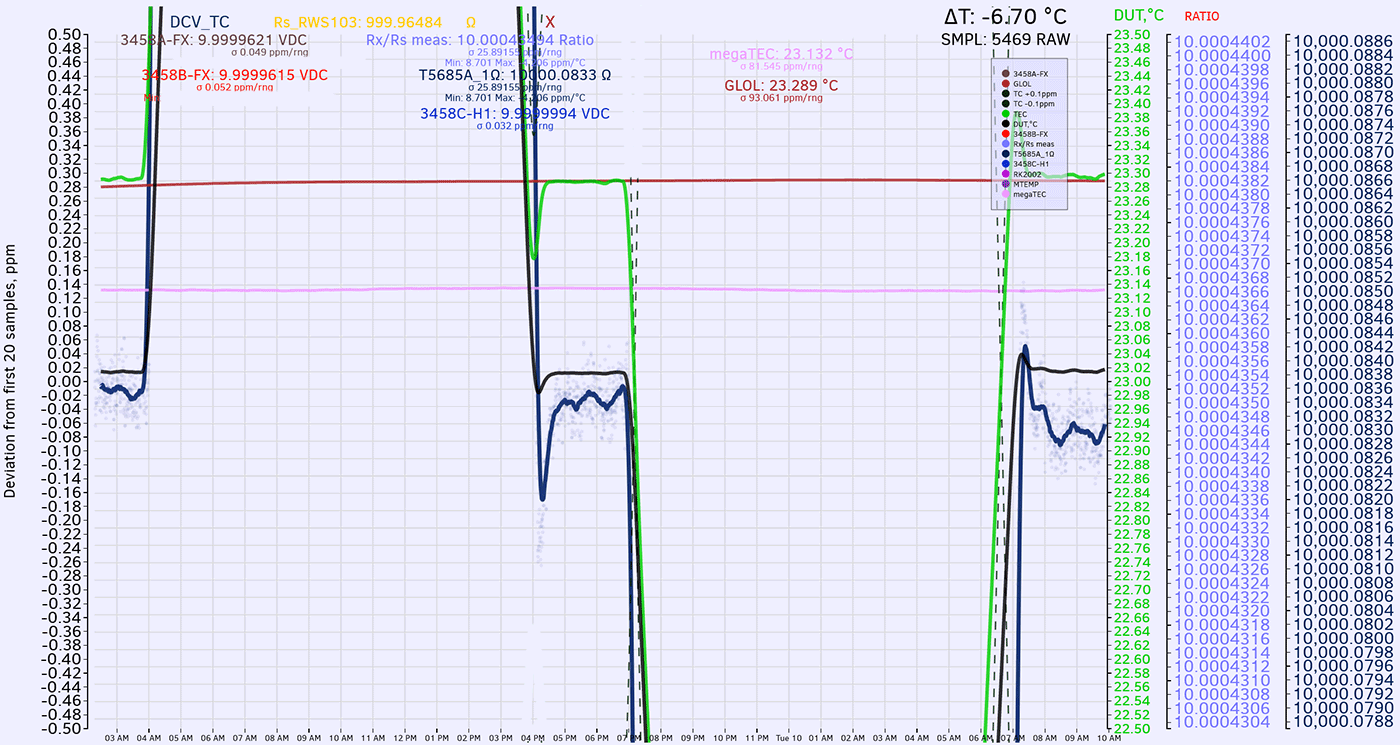
Retrace hysteresis due to temperature change is also very good for this standard. TCR measurement test sweep took 34 hours, with points key levels at +23.3 °C, +29.5 °C, +23.3 °C, +18.3 °C and final return to +23.3 °C. Final ratio deviation after this was under -0.1 ppm from original value at the beginning of the test.
And last but not least, final estimate of long-term drift for this Leeds & Northrup 4040B standard. Calculated resistance at new cardinal +23.0 °C point differs from previous verification result in February 2022 by -3.27 ppm. Guesstimated linear drift between two previous calibration points in June 4, 2017 and February 15, 2022 we obtain now new annual drift figures at -2.9 ppm/year and -3.6/year. Since xDevs.com’s best capability for 10 kΩ measurement back in 2017 was with 8½-digit HP 3458A DMM it is better to not use that point as reliable absolute measurement. By using only two last high quality measurements with 9½-digit Direct Current Comparator MI 6010B bridge we can have linear drift trend of -3.7 ppm/year. Keep this number only as a guideline estimate, since there are not enough points taken to have better statistical analysis.
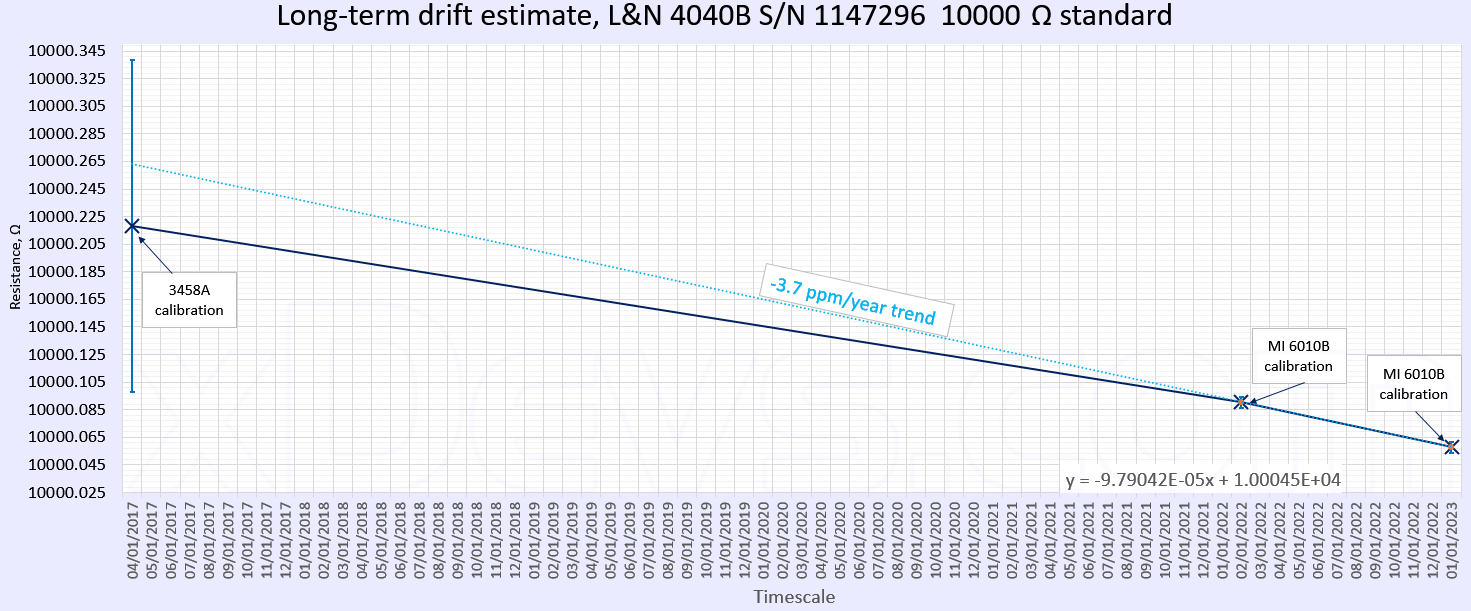
At this point this resistor is packed in and shipped to new owner at USA CalClub Round 3. Perhaps few years from now it will return back for re-calibration so long-term drift could be updated at that date.
| L&N 4040B temperature | Absolute resistance | Deviation to 10 kΩ | Relative to T23°C reference |
|---|---|---|---|
| 16.0 °C | 9999.1827 Ω | -81.7 ppm | -87.5 ppm |
| 16.5 °C | 9999.2639 Ω | -73.6 ppm | -79.3 ppm |
| 17.0 °C | 9999.3423 Ω | -65.7 ppm | -71.5 ppm |
| 17.5 °C | 9999.4178 Ω | -58.2 ppm | -63.9 ppm |
| 18.0 °C | 9999.4904 Ω | -50.9 ppm | -56.7 ppm |
| 18.5 °C | 9999.5601 Ω | -43.9 ppm | -49.7 ppm |
| 19.0 °C | 9999.6269 Ω | -37.3 ppm | -43.0 ppm |
| 19.5 °C | 9999.6909 Ω | -30.9 ppm | -36.6 ppm |
| 20.0 °C | 9999.7519 Ω | -24.8 ppm | -30.5 ppm |
| 20.5 °C | 9999.8101 Ω | -18.9 ppm | -24.7 ppm |
| 21.0 °C | 9999.8654 Ω | -13.4 ppm | -19.2 ppm |
| 21.5 °C | 9999.9178 Ω | -8.21 ppm | -14.0 ppm |
| 22.0 °C | 9999.9673 Ω | -3.26 ppm | -9.03 ppm |
| 22.5 °C | 10000.0139 Ω | 1.39 ppm | -4.37 ppm |
| 23.0 °C | 10000.0577 Ω | 5.77 ppm | 0.00 ppm |
| 23.5 °C | 10000.0985 Ω | 9.85 ppm | 4.09 ppm |
| 24.0 °C | 10000.1365 Ω | 13.6 ppm | 7.90 ppm |
| 24.5 °C | 10000.1716 Ω | 17.1 ppm | 11.3 ppm |
| 25.0 °C | 10000.2038 Ω | 20.3 ppm | 14.6 ppm |
| 25.5 °C | 10000.2331 Ω | 23.3 ppm | 17.5 ppm |
| 26.0 °C | 10000.2596 Ω | 25.9 ppm | 20.1 ppm |
| 26.5 °C | 10000.2831 Ω | 28.3 ppm | 22.5 ppm |
| 27.0 °C | 10000.3038 Ω | 30.3 ppm | 24.6 ppm |
| 27.5 °C | 10000.3216 Ω | 32.1 ppm | 26.3 ppm |
| 28.0 °C | 10000.3365 Ω | 33.6 ppm | 27.8 ppm |
| 28.5 °C | 10000.3485 Ω | 34.8 ppm | 29.0 ppm |
| 29.0 °C | 10000.3576 Ω | 35.7 ppm | 29.9 ppm |
| 29.5 °C | 10000.3639 Ω | 36.3 ppm | 30.6 ppm |
| 30.0 °C | 10000.3672 Ω | 36.7 ppm | 30.9 ppm |
| 30.5 °C | 10000.3677 Ω | 36.7 ppm | 31.0 ppm |
| 31.0 °C | 10000.3653 Ω | 36.5 ppm | 30.7 ppm |
| 31.5 °C | 10000.3600 Ω | 36.0 ppm | 30.2 ppm |
| 32.0 °C | 10000.3518 Ω | 35.1 ppm | 29.4 ppm |
| 32.5 °C | 10000.3407 Ω | 34.0 ppm | 28.3 ppm |
| 33.0 °C | 10000.3268 Ω | 32.6 ppm | 26.9 ppm |
| 33.5 °C | 10000.3099 Ω | 30.9 ppm | 25.2 ppm |
| 34.0 °C | 10000.2902 Ω | 29.0 ppm | 23.2 ppm |
| 34.5 °C | 10000.2676 Ω | 26.7 ppm | 20.9 ppm |
| 35.0 °C | 10000.2421 Ω | 24.2 ppm | 18.4 ppm |
| 35.5 °C | 10000.2137 Ω | 21.3 ppm | 15.6 ppm |
| 36.0 °C | 10000.1825 Ω | 18.2 ppm | 12.4 ppm |
Table 1: Calculated resistance table for different temperatures
And last but not least, traceability chain of transfers from xDevs’s primary ESI SR104 standard to this L&N 4040B. Fluke 742A-10k was used as additional confidence test to confirm numbers of in-house transfer 1000 Ω resistor.
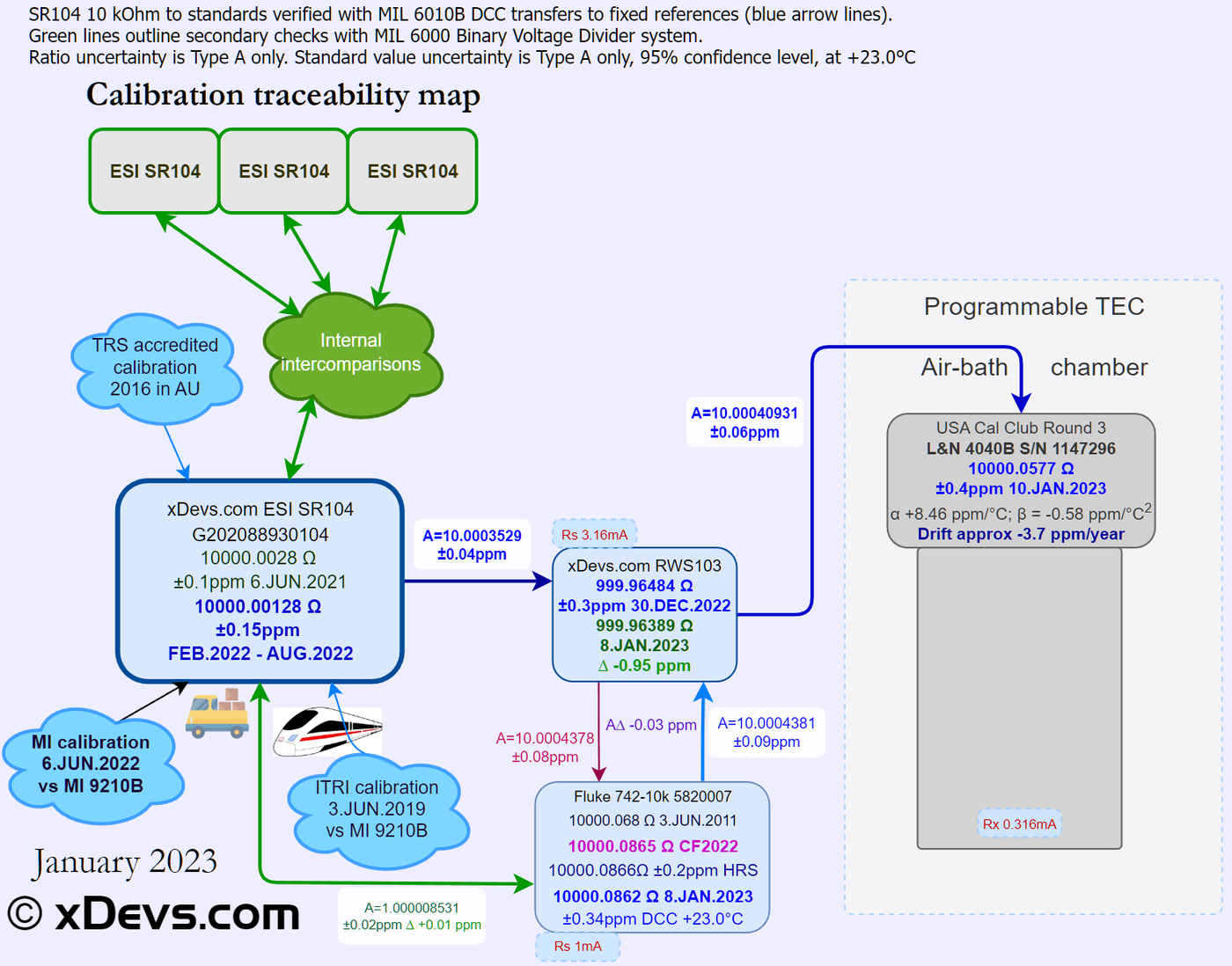
Summary
Despite serious age L&N 4040B proven to have good performance to act as a decent standard for typical hobby level lab with modest measurement requirements at 5½-digit level or similar. Temperature control is very welcome due to noticeable TCR, but device is useful even without it. Full measurement trace for last calibration is also provided in table below.
| Model and serial | Calibration date | Assigned value | Uncertainty | Temperature coefficient | Method | Test current | Note |
|---|---|---|---|---|---|---|---|
| ESI SR104 reference | MI 8.JUN.2021 | 10000.00128 Ω at +23 °C | ±0.1 ppm | α = -0.03 ppm/°C, β = -0.028 ppm/°C2, τ = >8 hour | DCC & 6000A HSB | 0.000316 A | Primary |
| Transfer RWS103 RSTD | xDevs.com JAN.2023 | 999.96484 Ω at +23 °C | ±0.3 ppm | Linear TC = +0.8 ppm/°C | DCC vs ESI SR104 | 0.00316 A | Transfer |
| This L&N 4040B S/N 1147296 | xDevs.com 10.JAN.2023 | 10000.0577 Ω at +23 °C | ±0.4 ppm | α +8.46 ppm/°C, β = -0.58 ppm/°C2, τ = <1 hour | DCC vs RWS103 | 0.000316 A | Final calibration |
Table 2: Final measurement traceability to accredited reference
Resistance measurement at ppm-level uncertainty is quite tricky business but even old standards still can have pretty good results at modest 4½ or 5½-digit level, especially when good temperature control/monitoring is added to account for large TCR.
Discussion about this article and related stuff is welcome in comment section or at our own IRC chat server: irc.xdevs.com (standard port 6667, channel: #xDevs.com). Web-interface for access mirrored on this page.Modified: Oct. 19, 2023, 8:16 p.m.

